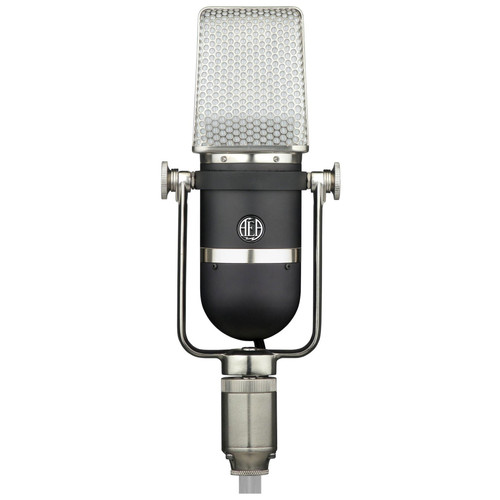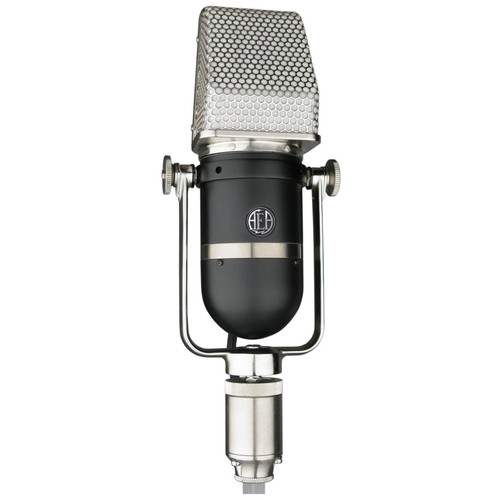The AEA A440 active studio ribbon microphone is a super quiet, phantom powered replica of the R44 Big Ribbon microphone.
The AEA A440 is built around the same aluminium ribbon and New Old Stock Ribbon material made by RCA in the 1930’s as the R44. The 60mm long aluminium ribbon is 1.8 micron thick, and is made of pure aluminium.
Part of the AEA “Big Ribbon” series, the A440 exhibits the same sonic characteristics as the R44 with a glorious low end and clear highs but is significantly quieter than its passive sibling thanks to the microphone’s step-up Lundahl transformer and amplifier circuit designed by Fred Forsell. Indeed it features an impressive 6dBA noise floor and a maximum SPL of 132.5dB. As a result, phantom power is required with this microphone.
Typical of ribbon microphones, the frequency response drops significantly in the high frequency region. The Ribbon retains a smooth articulate midrange with fast transient capture and no harshness whatsoever. Its figure of 8 polar pattern is as near perfect as it can be all the way down to 20Hz. During recording, the A440 will capture exactly what is being heard offering unparalleled realism that benefits acoustic instruments greatly.
AEA A440 Main Features:
• Phantom-powered "Big Ribbon" microphone
• Manufactured and assembled in the USA
• JFET active electronics in the AEA TRP tradition
• Exceptionally low equivalent noise level 6dB(A)
• Long ribbon sound in the 44 tradition
• Authentic RCA New Old Stock ribbon material
• Investment cast bronze yoke and machined brass parts, no zinc
• Single-diaphragm with well-controlled, native figure-8 polar pattern
• Consistent horizontal polar response, on and off axis
• 90-degree null-plane helps reject difficult acoustics
• High SPL capability: 132.5dB with a load of 1k Ohm
• Hand-built to order
• Computer-matched to production reference standards
• Frequency Response: 20Hz to 20kHz
• Equivalent Noise Level: 6dB SPL, A-weighted per IEC 651
• Dynamic Range: 126.5dB
• Signal to Noise Ratio: 88dB (A) (94dB SPL minus equivalent noise)
• Polarity: Pin 2 high for positive pressure on the front of the microphone.
• Connector: XLR-3M wired to a 9.9' captive cable
• Polar Pattern: Native Figure-8 (Bi-directional)
• Horizontal: Level changes with angle, frequency response is consistent, null at right angles to major axis 90 / 270 degrees
• Vertical: Level changes with angle, reduced HF response above and below 0 / 180 degrees axis, null at right angles to major axis 90 / 270 degrees


















